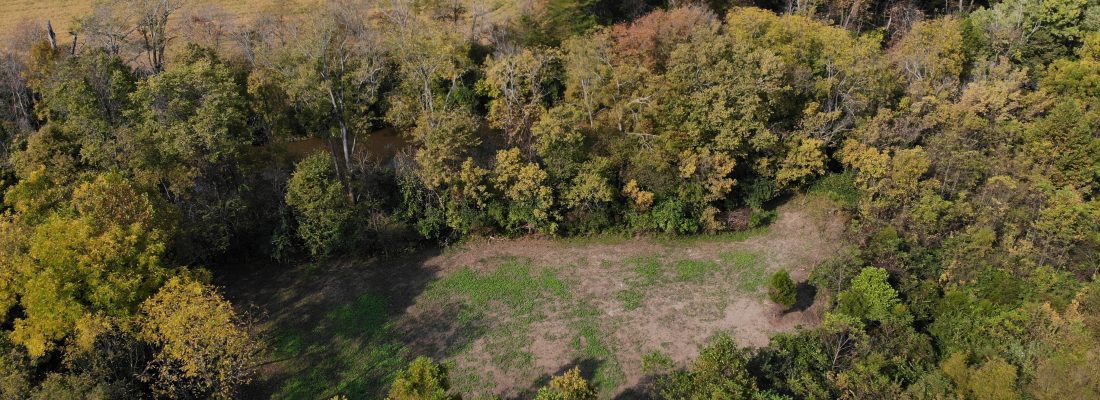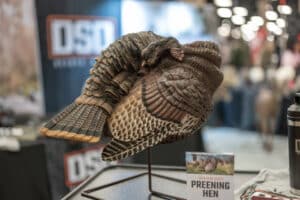No products in the cart.

365 Archery 3D Archery Targets
When folks enter a new industry, or even a new subsection of their industry, they usually dip their toe in by offering one or two


Small properties are often overlooked as viable hunting properties due to the problems associated with it being such a small tract of land. Most small properties simply lack the diversity in cover and food that most whitetails look for. However, it is untrue that those same small properties cannot provide exceptional hunting opportunity, even if they don’t have the means to hold a specific deer year in and year out. The key to managing a small property for hunting is to create an area of habitat that a whitetail desires, but is lacking on the surrounding properties.
Before I get into the details around why I think a small property can be just as productive as a big property, let’s first discuss an important detail that is often overlooked by many. Though a big tract of land provides more in the way of management opportunities, you generally aren’t hunting the entire property. Most people I know who hunt 200-300 acre properties kill the majority of their deer in the same stands or at least the same stand locations each and every year. But why is that?
Whitetail deer are most often killed when traveling from one location to another, and the route they choose to get between those locations is no coincidence. Funnels and travel corridors that provide elevated levels of safety between bedding cover and food sources are the most likely ambush spots. And if you can provide any of those elements to a deer that your neighbors cannot/are not, you can kill a deer whether your property is 5 acres or 500.
Every property will be unique, but in this example, we’ll look at my home property and discuss the steps I have taken to improve its huntability. The onX screenshot below shows the boundary of my property. The large blue line represents a river that averages 2-5 feet deep and the thin blue line represents a creek which has banks that are in some places 8ft tall or taller. All of my property and the surrounding properties are alike in the fact they are extremely thick with few if any mature trees, and most of those are walnuts, sycamore or maple. Needless to say, the deer travel on my property is very spontaneous. There are many well established trails, but it’s a crapshoot when a deer will use one vs the other. So what then are the key improvement areas to make my property hunt better?
Lucky for me, I was able to implement a single solution that took care of both of the needs on my property. A good buddy Dustin Burdine with Innovative Plot Designs came over to assess my property, and after a little bit of planning, he began a large cleaning project that would server to establish a new foot plot approximately .55 acres in size. So how did this create more diversity in food and habitat, all the while forcing deer to travel certain routes? Let’s break each item down and discuss…
One of the major issues on my property is that there is no quality food source available after the crops come out in the fall and the mast crop is consumed. Introducing a new food source will differentiate my property from those around it and give the deer a reason to stick around throughout the fall hunting season. In addition, during the process of putting in my new food plot we were also able to open up the existing trails and create a new trail connecting the northern and southern edge of the island the food plot sits on. These new trails will provide a break in the endless expands of honey suckle and often filter deer travel by themselves.
The other benefit the new foot plot will provide is the ability to force deer travel through certain areas. Clearing over a half an acre in thick cover provided a lot of brush to pile up along the southern and eastern edge of the foot plot. This brush is now impassable and forces the deer traveling across the island to enter the foot plot on one of two open trails. In the past the cover was so thick I have had deer within 10 yards and could not shoot. With the introduction of the foot plot, I will be able to better control the deer travel, and the benefit of having a 80 yard wide shooting lane is just a plus! Not to mention it has really helped with my ability to film.
The big question now remains whether or not the habitat improvement I’ve performed on my small property will pay off. Early trail camera surveys show that deer are frequenting the area in daylight more than they have in the past without the plot. This tells me that deer are bedding closer by and feel comfortable entering the plot. My suspicion is that bucks that are not already inhabiting the general area will take time to find the food plot, but I fully expect that in the years to come I will see an increase in early season buck movement.
The exact steps I took on my small property might not directly apply to yours, but the ideas I used to identify each actionable item remain true. Find out what is missing from your area, and introduce it on your property. More times than not, it is the ability to diversify your property that will attract deer. Planting the same clover or creating the same bedding habitat will only go so far. When possible, always play to the existing strengths of your property.

When folks enter a new industry, or even a new subsection of their industry, they usually dip their toe in by offering one or two

Highlights of Greylight’s new releases for 2024 – the Daybreak Blind, Transformer Tower, and Nomad trailer.

With one of their coolest decoys to date, the NWTF floor was buzzing with talk of the new DSD Preening Hen decoy. It’s almost TOO
Don’t miss a thing! Subscribe below to keep informed on everything that’s happening with the folks at SELFILMED.com